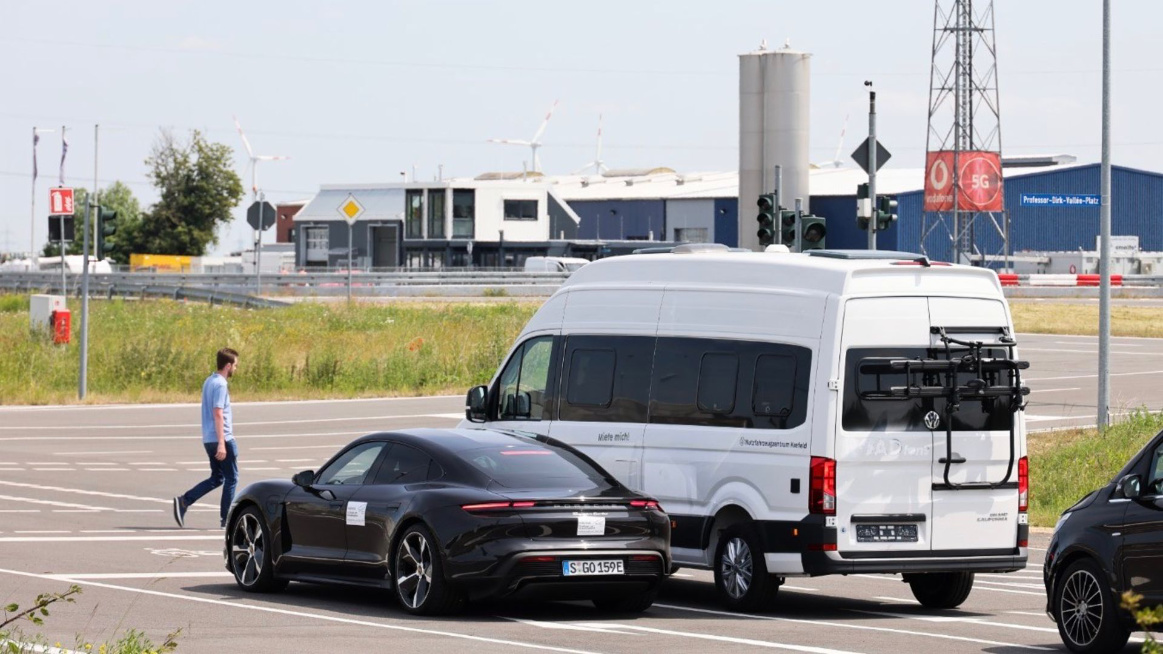
The biggest risk factor in driving is still the human being. Driving errors or even health problems on the part of the driver cause far more accidents than technical problems with the vehicle. According to statistics from the Association of German Engineers (VDI), around 85 percent of all accidents are caused by driving mistakes or human error.
To make roads safer in the future, HERE Technologies, Porsche and Vodafone are now testing how 5G technology and high-precision localization can help reduce the number of accidents with a real-time warning system. The idea is that in the future, vehicles and drivers will be warned of hazards “immediately and without delay” so they can react directly. The companies are testing this novel, real-time warning system for the first time under everyday conditions at the Vodafone 5G Mobility Lab in Aldenhoven, Germany.
MEC and 5G
The focus is on hazardous situations that are either barely visible to drivers or cannot be seen at all because the view is blocked by vehicles in front, for example. Here, camera and sensor systems will accurately capture and localize data using artificial intelligence and high-precision mapping and positioning technology. These are processed and analyzed directly at the edge of the road in multi-access edge computing (MEC). Using an intelligent MQTT message broker and 5G cellular technology, the information is then immediately transmitted to any vehicles following behind as accurate warnings.
In addition to HD maps and positioning technology, the Live Sense SDK from HERE Technologies integrated into devices with front cameras is also used in the detection of hazardous situations. This enables it to use computer vision and artificial intelligence to detect potential hazards such as objects, changes in the behavior of other road users or even road conditions that could lead to critical situations. Live Sense SDK creates appropriate alerts in real time based on this data. “Increasing road safety is a key concern for us,” says Antina Lee from the Product Innovation team at HERE Technologies. “Location-based technologies combined with 5G and multi-access edge computing enable powerful solutions that make roads safer and provide road users with a better mobility experience.”
Data processing outside the vehicle
In many cases, data processing takes place in centralized data centers, the researchers explain. “With multi-access edge computing (MEC), computing power moves closer and closer to the customer – in this case, to the vehicles. This saves time and enables real-time data exchange.” The paths that data would have to take to reach the recipient are significantly shortened. Thanks to 5G, the actual data transmission also runs in real time and alerts arrive to vehicles with latency times of less than ten milliseconds. And data that was previously processed inside the vehicle will also be processed outside in the future.
“When cars warn each other of dangers in real time, it can save lives,” explains Michael Reinartz, Head of Innovation at Vodafone Germany. “5G and roadside data processing help transmit hazard warnings without delay and make road traffic even safer. We are currently testing this under everyday conditions.”
Further tests
Feasibility studies or proofs of concept (PoC) are particularly important in the early project phase to test functionality. “The PoC supports the opportunity to explore and test the latest technologies in 5G and location services for potential future products,” explains André Schlufter, Connectivity and SIM Management at Porsche AG.
After completion of the ongoing tests in Aldenhoven, the real-time alert system will be further optimized by HERE Technologies, Porsche and Vodafone and its use in everyday life will be tested. This will be followed by further tests at different locations and under variable conditions.
Cover photo: Real-time warning system, 2021, Porsche AG. Taycan Turbo: CO₂ emissions combined 0 g/km (NEDC), electricity consumption combined 28.0 kwh/100 km (NEDC). © Volkswagen
Also interesting:
The Car That Cares: Digital Health Assistant Calls for Help for Drivers
Swiss researchers develop eye test for autonomous cars
Developing autonomous vehicles with technologies from the gaming industry
3D radar sensors enable autonomous driving without blind spots

